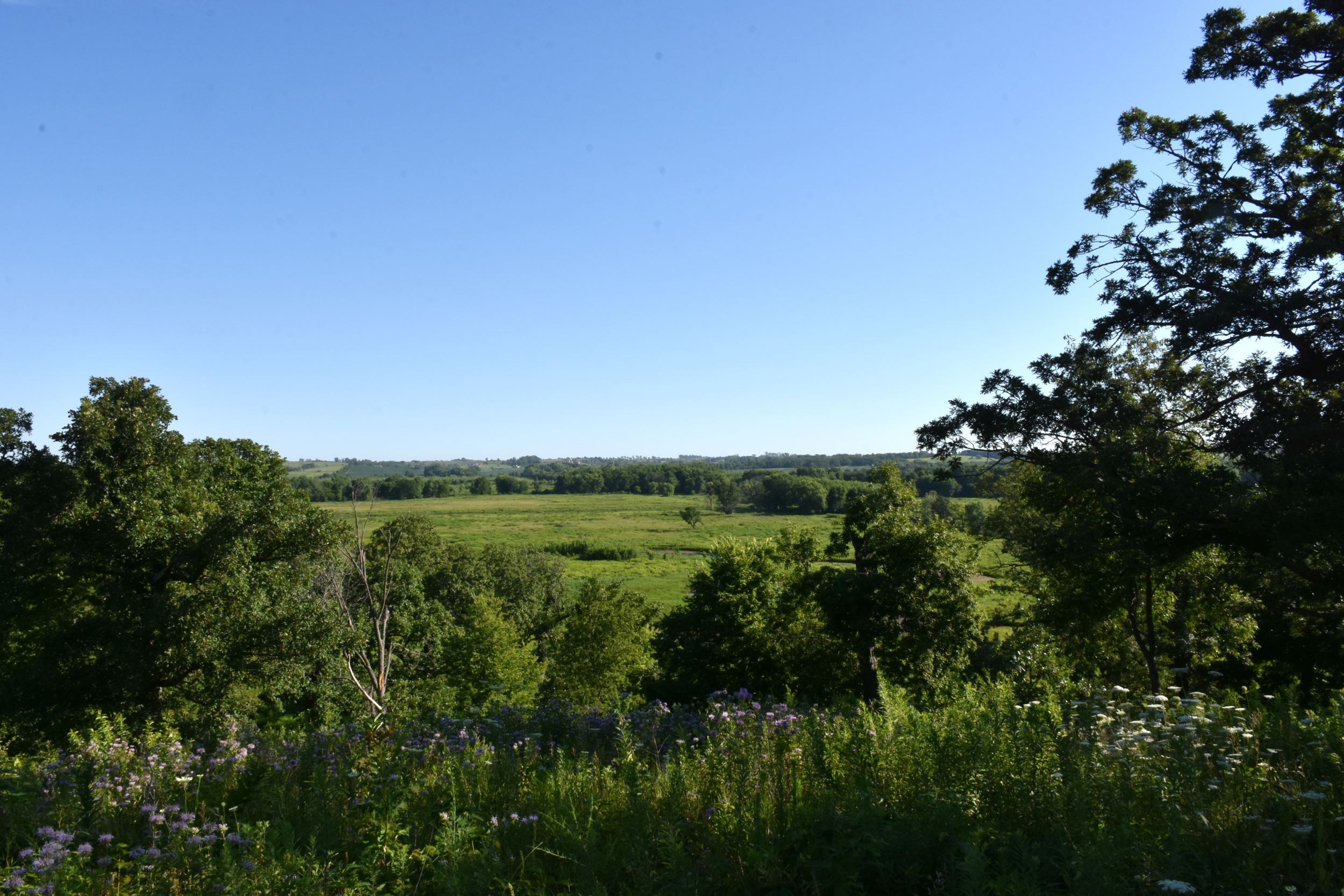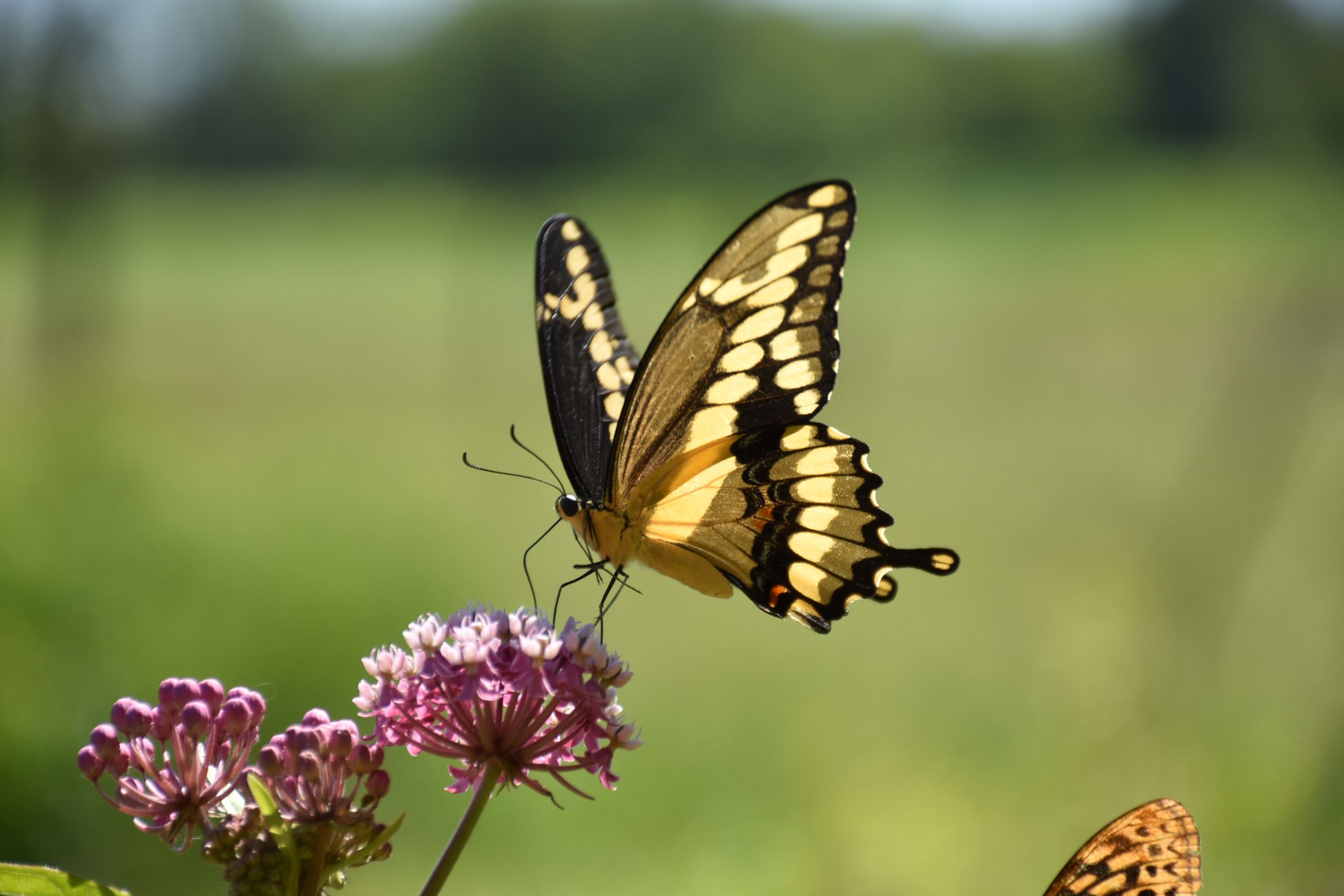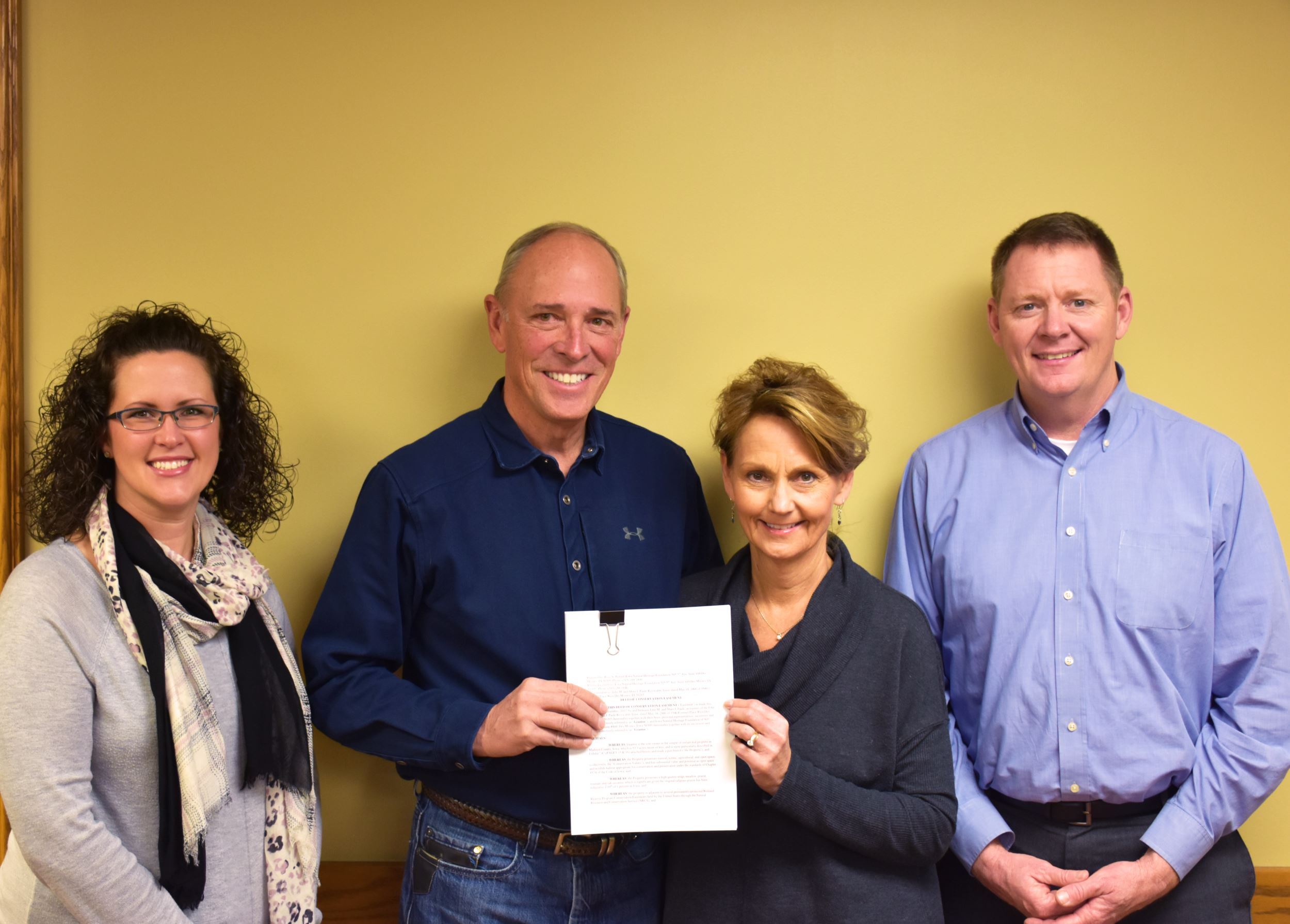Meadow-morphasis
By Samantha Jones, communications intern on November 21, 2018 in Blog

When John and Shari Paule purchased 40 acres southwest of Cumming in 2007, it wasn’t much to look at. Littered with rusting farm equipment, the rolling hillsides snarled with multiflora rose, the property seemed more like a lost cause than a future prairie and savanna restoration site.
“It was just engulfed in invasives,” John remembers. “The barn was a mess, the land was a mess, the for sale sign had fallen down in the ditch. But above the ridge, you could see the crowns of the bur oaks—and I just knew there was something there.”
At the time, John and Shari were relatively new to woodland management, developing a deep interest in it after John took a master woodland managers class at Iowa State University. As they began restoring the pasture land to oak savanna, prairie and wetland, they invited friends, including INHF President Joe McGovern, to look over the property and provide guidance in their next steps.
“I remember Joe telling us that it was the biggest 40 acres he’d ever seen,” Shari said, remembering the praise and excitement their farm received each time someone visited. “It contained a meadow, savanna, prairie and wetland all within that space. You don’t find that kind of diversity on 40 acres anywhere!”
One area of the Paule property that drew high praise from conservationists and land management experts was the sedge meadow — a rare wetland ecosystem in Iowa made up of grass-like plants that have sharp, triangular stems. Due to water pollution and sedimentation, sedge meadows degrade quickly, making the diversity and high quality of John and Shari’s sedge meadow unparalleled.

“Sedge meadows can be rare because tiling and drainage have converted most of them to agricultural land,” said Dr. Thomas Rosburg, a biology professor at Drake University who surveyed the property in 2012. “The Paules’ sedge meadow seems to be relatively intact and although non-native reed canary grass did invade and cause degradation, it has not been able to displace native species.”
For many years, John and Shari worked hard at managing the land, but their efforts weren’t always rewarded with immediate success — after trying to restore the remnant prairie and seeing dismal results, they were advised to start afresh. But over the years as fewer invasives reappeared and were replaced with a diverse population of native species, the Paules say their work has more than paid off. Since purchasing the original 40 acres, the Paules have added surrounding land for protection.
“There’s just a different feel to it,” Shari said. “On the ridge, there’s this sense that you’re looking out over everything around you, like it’s this whole other place. You see the sky change, you see the storms rolling in. And when you look at what it was, compared to where it is now, there’s this immense feeling of satisfaction.”

In 2017, John and Shari chose to donate a conservation easement on 92 acres to INHF, protecting it from being developed or converted from its natural state. The easement also protects the water quality of the nearby North River and builds into a complex of protected land in the Emergency Wetland Reserve Program, providing significant wildlife habitat.
“After years of working so hard on it, we knew we didn’t want to see all of that undone,” says John. “Our kids don’t live here; if they choose to sell it at some point, this way we know the future landowners will be people who care about the land and will continue what we’ve started.”
“The generosity of John and Shari is something that protects more than just their property,” said Erin Van Waus, INHF conservation easement director. “We’re protecting corridors, and private landowners are a big part of helping us move the needle towards better water quality, habitat, stewardship and overall conservation benefit through their easements.”